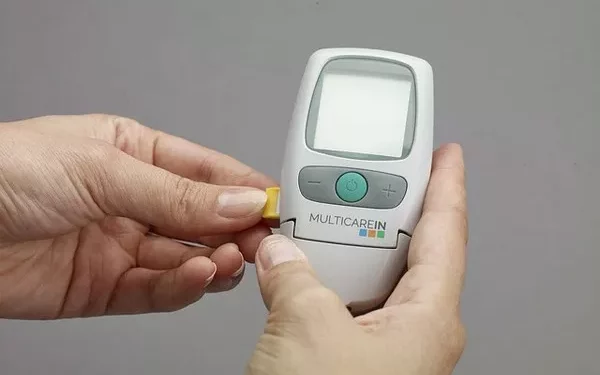Monitoring blood glucose levels is a cornerstone of diabetes management. It allows individuals with diabetes to understand how their body is responding to food, medication, exercise, and other factors. However, in addition to blood glucose measurements, urine glucose levels can also provide valuable insights into a person’s diabetes management, as urine testing is sometimes used to detect abnormal glucose levels in the body. But what exactly are normal urine glucose levels, and how do they compare to blood glucose levels?
Urine glucose testing is primarily used in situations where direct blood glucose monitoring is not possible, or as a supplementary tool to aid in diabetes management. Understanding what constitutes normal and abnormal urine glucose levels, when testing should be conducted, and how to interpret the results is essential for both healthcare professionals and individuals with diabetes. In this article, we will explore the concept of urine glucose levels, what normal levels look like, the factors that affect urine glucose, and how to use urine glucose testing to monitor and manage diabetes.
Understanding the Basics of Urine Glucose Testing
Glucose is a type of sugar that the body uses as its main energy source. It is derived from the carbohydrates consumed in the diet and enters the bloodstream after digestion. The kidneys play a vital role in filtering the blood, removing waste, and maintaining a healthy balance of water and electrolytes. Under normal circumstances, the kidneys filter glucose from the blood but reabsorb it back into the bloodstream, preventing it from being lost in the urine.
However, when blood glucose levels become too high—a condition known as hyperglycemia—the kidneys are no longer able to reabsorb all the glucose. This leads to glucose spilling into the urine, a condition known as glycosuria. The presence of glucose in the urine is often an indicator of uncontrolled diabetes or other health conditions affecting glucose metabolism.
Urine glucose testing involves using a strip or device to check for the presence of glucose in the urine. This can be done at home or in a healthcare setting and is an easy way to assess whether glucose levels are abnormally high. While it is not as precise as blood glucose testing, urine glucose testing can still provide useful information about a person’s overall blood glucose management and help detect early signs of potential complications.
The Physiology Behind Urine Glucose Levels
To understand how urine glucose levels correlate with blood glucose levels, it’s important to know how the kidneys process glucose. Under normal conditions, the kidneys filter glucose from the blood through the glomeruli (tiny filtration units in the kidneys). After filtration, the glucose passes into the renal tubules, where the majority of it is reabsorbed back into the bloodstream. This reabsorption occurs through a process called active transport and is mediated by specific glucose transporters located in the kidneys.
The ability of the kidneys to reabsorb glucose depends on the concentration of glucose in the blood. In healthy individuals, the kidneys can reabsorb glucose up to a certain threshold—called the renal threshold for glucose. This threshold is typically around 180 mg/dL (10 mmol/L). If blood glucose levels exceed this threshold, the kidneys cannot reabsorb all the glucose, and the excess glucose is excreted into the urine.
When blood glucose levels are consistently high, the renal threshold is exceeded more frequently, leading to persistent glycosuria. This is a hallmark of poorly controlled diabetes or other conditions that affect the body’s ability to regulate blood sugar levels. Therefore, urine glucose levels can be a useful indicator of how well an individual’s blood glucose is being managed, though they should not replace blood glucose monitoring, which provides more accurate and real-time data.
What Are Normal Urine Glucose Levels?
Urine glucose levels are typically measured in terms of the amount of glucose present in a given volume of urine. Most urine glucose test strips and devices provide results based on a scale, usually from negative (no glucose detected) to various levels of glucose concentration (e.g., 1+, 2+, 3+).
In a healthy individual without diabetes, the urine should have no detectable glucose. This is because the kidneys filter and reabsorb all of the glucose, so it is not present in the urine. The test result for a person with normal blood glucose levels would typically be reported as “negative” for glucose.
For individuals with diabetes or other conditions affecting glucose metabolism, the presence of glucose in the urine can be indicative of elevated blood glucose levels. The normal urine glucose level for someone with well-controlled diabetes may vary slightly, but it should ideally be trace or absent under normal circumstances. If the urine glucose level is consistently elevated, it may indicate that blood glucose is too high and requires attention.
The following is a general guideline for interpreting urine glucose levels:
Negative: No glucose detected in the urine. This is the normal result for people without diabetes or those with well-controlled diabetes.
Trace: A very small amount of glucose in the urine. This could be due to slight fluctuations in blood glucose levels and is not necessarily a cause for concern, but it may indicate that further monitoring is needed.
1+ (Light): Mildly elevated glucose levels in the urine. This result could suggest that blood glucose levels have recently exceeded the renal threshold and may require a closer look at overall glucose management.
2+ (Moderate): Moderately elevated glucose levels in the urine. This may indicate that blood glucose levels have been consistently elevated and that adjustments to diet, medication, or lifestyle may be necessary.
3+ (High): High levels of glucose in the urine. This indicates that blood glucose levels are likely very high and that immediate intervention may be needed to avoid complications such as diabetic ketoacidosis (DKA).
It is important to note that urine glucose testing is not as accurate as blood glucose monitoring and is not typically used for routine blood sugar management. However, it can serve as an additional tool for people with diabetes to help identify trends or episodes of high blood sugar.
Factors That Affect Urine Glucose Levels
Several factors can influence the presence of glucose in the urine, including:
1. Blood Glucose Levels
As mentioned earlier, the most significant factor affecting urine glucose levels is the concentration of glucose in the blood. When blood glucose levels exceed the renal threshold of around 180 mg/dL, glucose begins to spill into the urine.
2. Renal Function
The kidneys’ ability to filter and reabsorb glucose plays a crucial role in determining urine glucose levels. In some cases, kidney damage or dysfunction may affect the renal threshold, leading to glucose being excreted in the urine even at lower blood glucose levels.
3. Medications
Certain medications, such as SGLT2 inhibitors (e.g., canagliflozin, dapagliflozin), can increase the excretion of glucose in the urine by inhibiting glucose reabsorption in the kidneys. While these medications can be helpful in managing blood glucose levels in people with Type 2 diabetes, they may also result in higher urine glucose levels.
4. Dehydration
Dehydration can concentrate the urine, potentially leading to a false-positive result for urine glucose testing. In situations where a person is dehydrated, even small amounts of glucose may appear more concentrated in the urine.
5. Dietary Factors
Dietary factors, such as high-carbohydrate meals or high sugar intake, can cause temporary increases in blood glucose levels. These fluctuations may result in short-term increases in urine glucose levels, particularly if the blood glucose threshold is surpassed after eating.
6. Infections
Urinary tract infections (UTIs) and other infections may influence urine glucose levels. In some cases, infections can cause temporary spikes in blood glucose, leading to glucose in the urine.
7. Stress
Stress can also elevate blood glucose levels, as the body releases stress hormones like cortisol and adrenaline, which can raise blood sugar. This may result in transient increases in urine glucose levels during times of emotional or physical stress.
When to Test Urine Glucose
Urine glucose testing is not typically recommended for routine daily monitoring for most individuals with diabetes. Instead, blood glucose monitoring is more accurate and provides real-time data about blood sugar levels. However, urine glucose testing can be useful in certain situations, including:
When blood glucose testing is not available: For example, if a blood glucose meter is not accessible or malfunctioning, urine glucose testing can serve as a backup tool to identify potential hyperglycemia.
During periods of illness: Illness and infection can cause blood glucose levels to fluctuate. Testing urine glucose levels during illness may help identify whether blood glucose is elevated.
During periods of medication adjustments: If changes in diabetes medications (such as insulin or oral drugs) are being made, urine glucose testing may help monitor the effects on blood sugar control.
It is important to consult with a healthcare professional to determine when urine glucose testing may be appropriate for individual needs.
Conclusion
Urine glucose testing provides a simple and accessible method for detecting the presence of glucose in the urine, which is typically an indication of elevated blood glucose levels. In a healthy individual, the urine should be negative for glucose, while in individuals with diabetes, trace amounts of glucose may appear when blood glucose levels exceed the renal threshold.
The presence of glucose in the urine is not a substitute for blood glucose monitoring, but it can be an additional tool for managing diabetes. Understanding what constitutes normal urine glucose levels, the factors that affect them, and how to interpret test results is essential for both healthcare providers and individuals with diabetes. When used in conjunction with other monitoring tools, urine glucose testing can help ensure optimal diabetes management and prevent complications associated with uncontrolled blood sugar.
Always consult with a healthcare professional to determine the best strategies for blood glucose and urine glucose monitoring to maintain overall health and well-being.
Related topics:
What Is a Normal Blood Sugar Level and A1C?



























